HOME GUARD MEMORIES AND INFORMATION - WARWICKSHIRE, BIRMINGHAM
THE BIRMINGHAM HOME GUARD
THREE BIRMINGHAM HOME GUARDS
This is a page within the
www.staffshomeguard.co.uk website.
To see full contents, go to
SITE MAP.
|
|
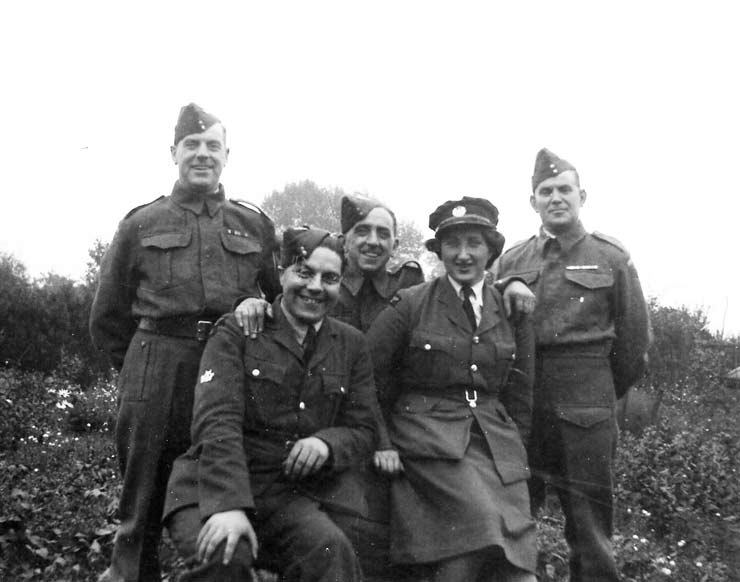 THREE
BIRMINGHAM HOME GUARDS had much in common: THREE
BIRMINGHAM HOME GUARDS had much in common:
They were all
born in the last years of the 19th century:
they all worked initially on the railways -
probably the L.N.W.R.; they all served in the
Great War and survived it; they were all
members of the same extended family -
half-brothers or brothers-in-law, in fact; they were
always the closest of friends - "as thick as
thieves and never apart much, a mini band of
brothers, so to speak"; and they all became
members of the
Birmingham Home Guard in the country’s
later hour of need.
The three
Birmingham Home Guards were:
-
Frank Herbert
Carter - 37th Warwickshire (Birmingham)
Battalion
-
Mark Feeney - 33rd
Warwickshire (Birmingham) Battalion
-
Arthur
James Taylor - 40th Warwickshire (Birmingham)
Battalion
(Mark, Arthur and Frank at the rear of the
above photograph)
With
the help of David Wakefield of Little
Bromwich, who is related to all three and has
generously provided the following information,
we are able to commemorate each of them on
this page:
Frank Carter - Mark
Feeney -
Arthur Taylor
|
|
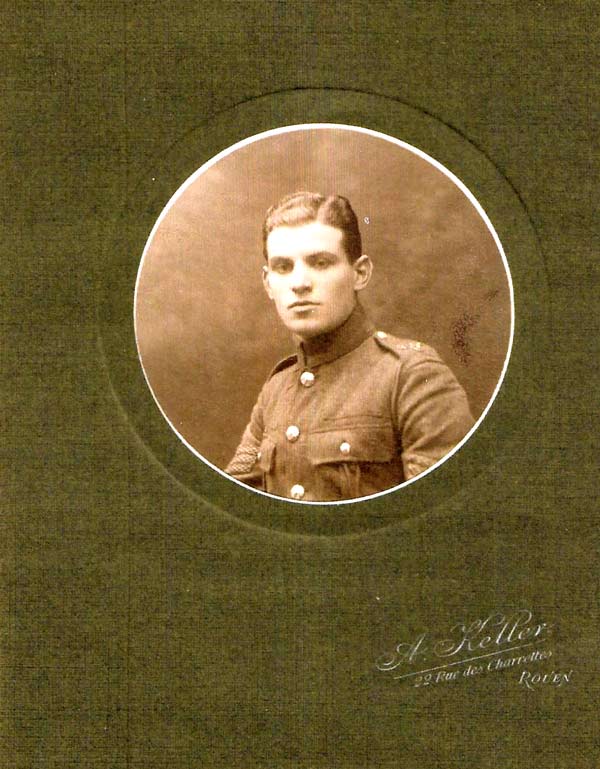 FRANK
HERBERT CARTER (1895-1968) FRANK
HERBERT CARTER (1895-1968)
EARLIEST
LIFE
Frank Herbert
Carter was born on November 9th 1895 in
Deritend,
Aston to
William (a coal carter) and Elizabeth Carter
of 274 Lawley
Street, Aston.
(Elizabeth Carter was previously Elizabeth
Feeney, wife of John Feeney
(ca.1854-1893) and mother of
Mark Feeney
(b.1889 - see below). Frank Carter
and Mark Feeney were thus half-brothers.
Elizabeth had suffered not only the loss of
her first husband but also that of two
children, siblings of Mark, over a six month
period in 1893).
After leaving school Frank worked
on the railways. He was of a good stature,
5' 10" tall with blue eyes and light brown
hair.
THE GREAT WAR
Frank Carter enlisted
in 1915 in Birmingham and saw service as a
Private in the
Army Service Corps and later as a
Serjeant in the
Machine Gun Corps.
The following
image shows him in a group of Machine Gun
Corps comrades.
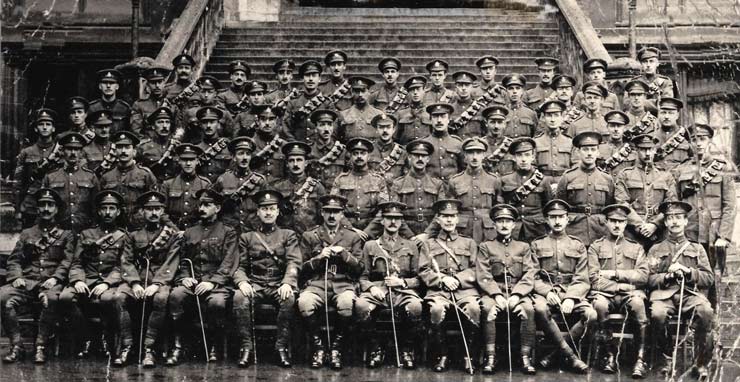
Frank Carter is fourth from the
left, fourth row back (i.e. between nos. 2 and
3 from the left in the back row).
FRANCE 1919 - 1940
At the end of
his Great War service, Frank's life took a
remarkable turn in a small town on the
southern outskirts of Rouen,
Amfreville-la-Mi-Voie.
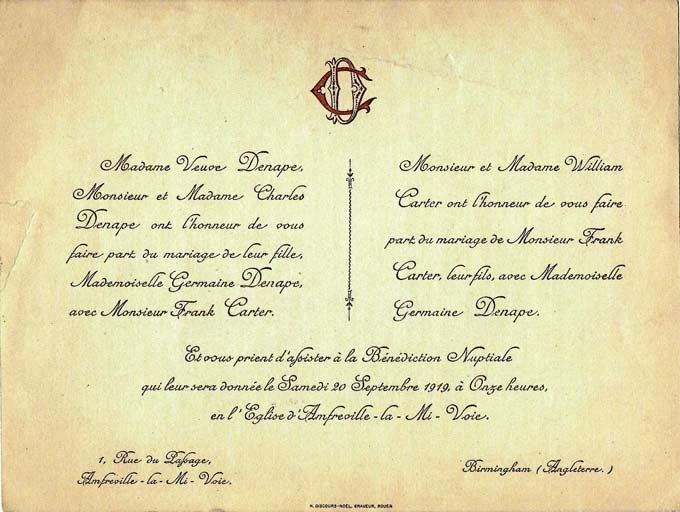
Translation
|
Madame Denape (widow), Monsieur
and Madame Charles Denape have the
honour of inviting you to the
marriage of their daughter,
Mademoiselle Germaine Denape, to
Monsieur Frank Carter.
|
Monsieur and Madame
William Carter have the honour of
inviting you to the marriage of
Monsieur Frank Carter, their son, to
Mademoiselle Germaine Denape. |
|
And ask you to be present at the
nuptial blessing which will be given
to them on Saturday 20 September 1919
at 11 o'clock in Amfreville-la-Mi-Voie
Church. |
|
1 Rue du
Passage, Amfreville-la-Mi-Voie
|
Birmingham, (England) |
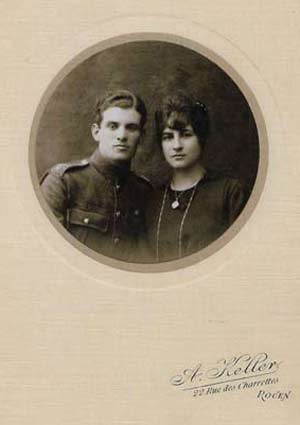 This
is Frank with his bride,
Mlle. Germaine
Denape. This
is Frank with his bride,
Mlle. Germaine
Denape.
The couple
made their home in France with Frank employed
in some sort of clerical capacity. In 1920, a
son was born, named William. We can only
assume that life proceeded in a satisfactory
and normal manner for the next almost twenty
years. But the threat of war grew from the
mid-thirties onwards and it is perhaps
significant that Frank acquired a new passport
from the British Consul in Rouen on 3rd August
1939. He was of course still a British citizen
but the protection of that document may not have extended to
his wife and son. We have to assume that
Germaine and William had their own travel
documentation but, at that point, war had not
broken out and, anyway, the possibility of
France being overrun must have seemed
unthinkable.
Ten months
later, however, the impossible was happening.
The German Army had penetrated into vast areas
of France since their invasion of 10th May,
the British had completed the withdrawal of
the British Expeditionary Force and several
French divisions from Dunkirk on 4th June and
the remaining 60 French divisions, with the
support of two British, were being forced
inexorably westwards. Paris was occupied on
14th June. It was clearly just a matter of
time until defeat was total.
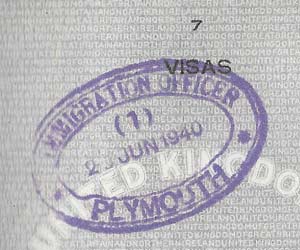 It
seems that Frank left it as late as he could
possibly could. His intention was to flee, with
his wife and son. But something went wrong -
and that has to be hardly surprising in the
midst of all that panic and confusion - and we
find Frank, alone and with just one suitcase
and a few photographs and documents, arriving
at Plymouth with other refugees on 28th June (here
is the Immigration
Officer's stamp -
see right).
The ship is the
Baron Nairn which is shown in this
newspaper cutting from The Birmingham Mail or
Post of Wednesday, 3rd July 1940. Frank must
have reached Birmingham by then. It
seems that Frank left it as late as he could
possibly could. His intention was to flee, with
his wife and son. But something went wrong -
and that has to be hardly surprising in the
midst of all that panic and confusion - and we
find Frank, alone and with just one suitcase
and a few photographs and documents, arriving
at Plymouth with other refugees on 28th June (here
is the Immigration
Officer's stamp -
see right).
The ship is the
Baron Nairn which is shown in this
newspaper cutting from The Birmingham Mail or
Post of Wednesday, 3rd July 1940. Frank must
have reached Birmingham by then.
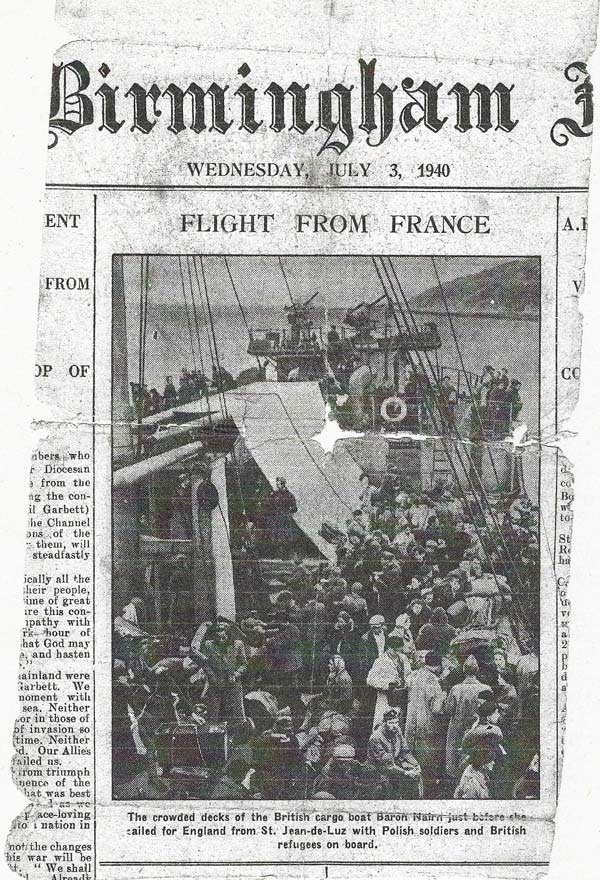
The
above cutting and the following image show the ship which took Frank back
home, the cargo boat
Baron Nairn.
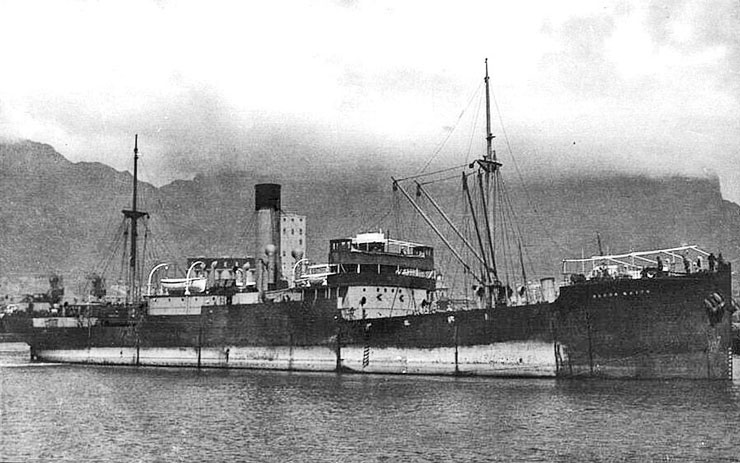
The
caption
states that the ship had departed from
Saint-Jean-de-Luz.
This is a port on the southern coast of the
Bay of Biscay. We
believe Frank was living in Rouen in 1940 ; and therefore
he must have travelled to the south-west where he caught the boat.
Whether Germaine and William were with him or
not on this journey to the coast and safety,
is not known - but William was twenty by then
and could even have been a soldier. The Baron
Nairn left the port on Thursday 25th June and
headed for Falmouth at a speed of 8 knots.
1200 Polish troops and a number of other
refugees were aboard, including Frank. It was
escorted by HMS
Wren. In the course of the voyage the
destination changed: Wren was instructed at
10.12 on the Saturday night to detach Baron
Nairn from its convoy and the ship eventually
reached Plymouth at 07.35 on the morning of
Sunday 28th June, three days after having set
off. It was the last significant ship
to reach that port.
|
OPERATION AERIAL
Frank's voyage was part of
Operation
Aerial, initiated on 15th June 1940 to
repatriate the remaining men of the
B.E.F. and British civilians from
France as the German Army penetrated
ever deeper into the country. It was a
huge operation and many ships and
several ports were involved. The
records give hints about the
desperate, probably chaotic
circumstances. For example:
Monday 17th June
"HIGHLANDER
signalled (1603/17) that
LANCASTRIA
was hit and sinking....."
(Official record).
(This
was the biggest disaster in British
maritime history and occurred in the
Loire estuary. The ship was crammed
with troops. News of the incident was
suppressed. Casualties remain unknown
to this day but are estimated to have
been between 3000 and 6500).
Wednesday 24th June
"C.S.2. reported (2144) re C. in
C.'s 2356/22., refusing permission to
embark wives and families, causing
difficulties and heartrending scenes.
S.N.O. asking if he can promise
embarkation after priority commitments
fulfilled. Impossible to be sure of
identity".
(Official record)
Thursday 25th June
Sailed from
St. Jean de Luz
(1430) KELSO,
BARON KINNARD with 2000 troops for
Liverpool. BARON NAIRN with British refugees
and 1200 Polish troops for Falmouth escorted by
WREN at 8
knots. L/L Trawlers BERVIE BRAES and
ST.
MELANTE sailed for Plymouth (1510). C.S.2. reported (1525) sailed for
Falmouth (1345) empty transports
CYCLOPS, KERMA, CLAN
ROSS, GLENAFFRIC,
BELGRAVIAN, BECKENHAM, escorted by
MACKAY and
VIVA II at 8
knots. C-in-C informed Admiralty (1721) that it was
intended to release merchant ships
reserved for "Aerial" as no further
requirement could be foreseen"
(Official record).
"Embarkation
continued throughout the 24th,
although it was greatly hindered owing
to the heavy swell in the bay; and
just after midnight a message was
received from the S.N.O. ashore
(Captain Allen)
to the effect that the terms of the
armistice required all evacuation of
troops to cease after 1200 on June
25th. A convoy of six empty ships was
sailed for England at 1345 on the
25th, followed within the hour by the
last three loaded ships, all being
escorted. Captain Allen and the beach
parties embarked in the Canadian
destroyer
FRASER
and all the remaining ships sailed at
1530".
(Naval Staff History Second World War).
At 22.15 that day,
HMCS Fraser
was accidentally rammed by a cargo
ship,
CALCUTTA,
and cut in half. There were
significant casualties.
HMS Wren
became the victim of dive bombers off
the Suffolk coast, a year later. And
the fate of the
Baron
Nairn, a ship of 3164 tons, was
to be torpedoed on Sunday 8th June
1941 by U-108. Of its 40 crew, one was
lost (out of a total of
52 British Merchant Navy men on that single
day), 18 were picked up
by a Canadian corvette, and the remaining 21,
including the Master,
John Kerr, survived for
19 days in a lifeboat before being rescued).
|
And so Frank survived all these
dangers and eventually stepped ashore in
Plymouth - alone. (Is any part of the official
record significant in indicating why Germaine
and William were absent?) Amongst the few photographs
he
brought with him were the portraits above.
And also a glimpse of his life in the 1930s: a
visit, perhaps, to the battlefields where he
had fought and one of the cemeteries:
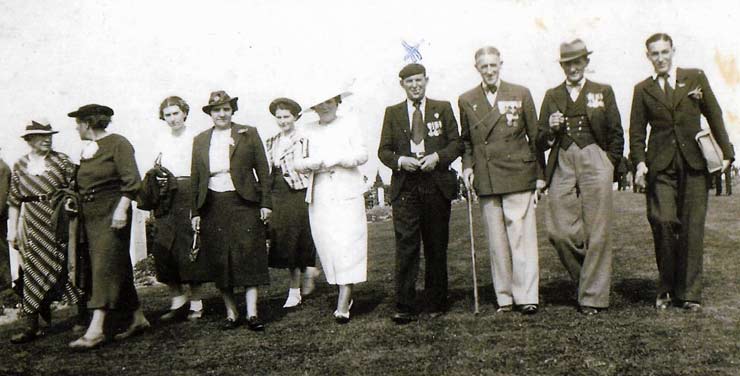
Frank is standing next to Germaine
(with her remarkable hat), fourth from the
right, in beret, sporting a row of medals and,
perhaps, a Gauloise.
And again on the same sunny 1930s day:
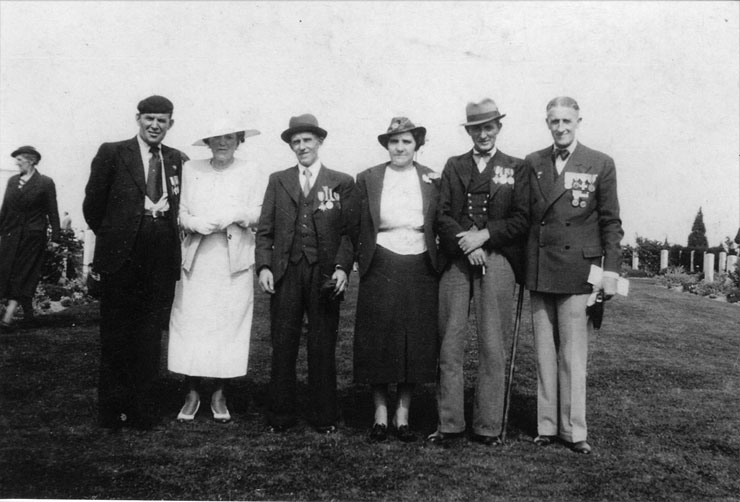
There is evidence that Frank returned
to England occasionally during the 1920s and
1930s, perhaps for family visits and military
reunions.
The events of June 1940 were of course a family tragedy.
It appears that the intention had been for his
family to escape
with him but, for one reason or another, this
had not been possible.
There was never further contact with
Germaine or William
of any sort. She is known
to have survived the war but sought the
support of a
Frenchman to do so, and that was the end of
the marriage. There was
some contact with members of her family in the
late 1950s and early 1960s but that lapsed
shortly afterwards. And never any contact with Germaine
and William.
ENGLAND,
WW2 AND LATER
Only the
barest outline survives of Frank's Home Guard
service, with less
documentation than that covering his earlier
life.
He volunteered on 25th
September 1941 and joined the
37th Warwickshire
(Birmingham) Battalion. This
Battalion's area of responsibility was the
Small Heath
part of Birmingham. It is reasonably well
documented within this website - go to this
page:
Birmingham, Small Heath for a summary of
contents. Frank has not so far been identified
in any of the images but they
show many of the men who would have been his
comrades.
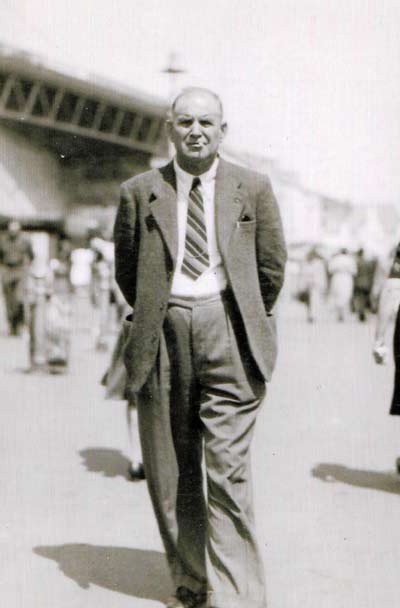 He later transferred to
103 Warwickshire
Home Guard AA Rocket Battery under the
command of Maj.
G.E.G Assinder which was located at
Stechford.
(Information about this fearsome weaponry -
the "Z-Battery"
- is available elsewhere within this website.
Use the site
Search function to find it). Frank would
have either volunteered or "been volunteered"
for these
different duties: in late 1942 and
early 1943 a large number of Home Guards in or
near heavily populated areas transferred from
their normal infantry role to man various
types of anti-aircraft units in their area.
Frank was clearly one of them. Another of
the 37th Battn. men
was
Bert Webb, but
he joined another Birmingham Rocket Battery,
the 107th
at Billesley
Common. This transfer policy released
regular Royal Artillery men for other duties
in the build up to D-Day. He later transferred to
103 Warwickshire
Home Guard AA Rocket Battery under the
command of Maj.
G.E.G Assinder which was located at
Stechford.
(Information about this fearsome weaponry -
the "Z-Battery"
- is available elsewhere within this website.
Use the site
Search function to find it). Frank would
have either volunteered or "been volunteered"
for these
different duties: in late 1942 and
early 1943 a large number of Home Guards in or
near heavily populated areas transferred from
their normal infantry role to man various
types of anti-aircraft units in their area.
Frank was clearly one of them. Another of
the 37th Battn. men
was
Bert Webb, but
he joined another Birmingham Rocket Battery,
the 107th
at Billesley
Common. This transfer policy released
regular Royal Artillery men for other duties
in the build up to D-Day.
Frank continued to serve
until the Home Guard stand-down at the
beginning of December 1944.
The image
(right)
is of him during the postwar years.
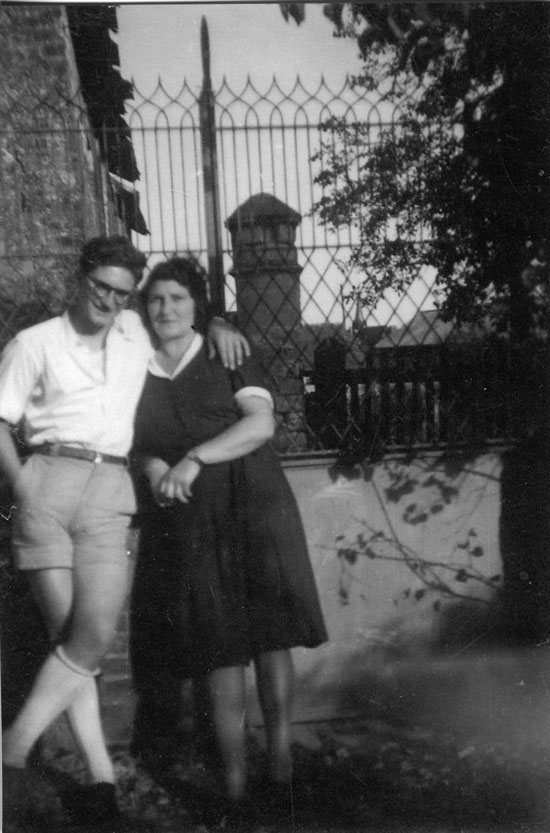 |
Whilst there was never any
contact with Germaine and William after June
1940, a later image of them exists in the
family archive, almost certainly provided by
those members of her family who visited
England in the 1950s/60s.
This was taken somewhere in
France in 1946 and proves their survival
despite all the risks of war and occupation
which threatened them between 1940 and 1944.
Frank must have seen this image.
One can only guess at the emotions to which it
gave rise.
In 1955 Frank Carter
was living with his half-brother, Mark
Feeney, at 84 Treaford Lane, Alum Rock
and may well have originally sought
refuge there on his return from France
in 1940. He was a Progress Clerk. Frank
died in Birmingham on 24th July 1968 at the
age of 72.
|
|
|
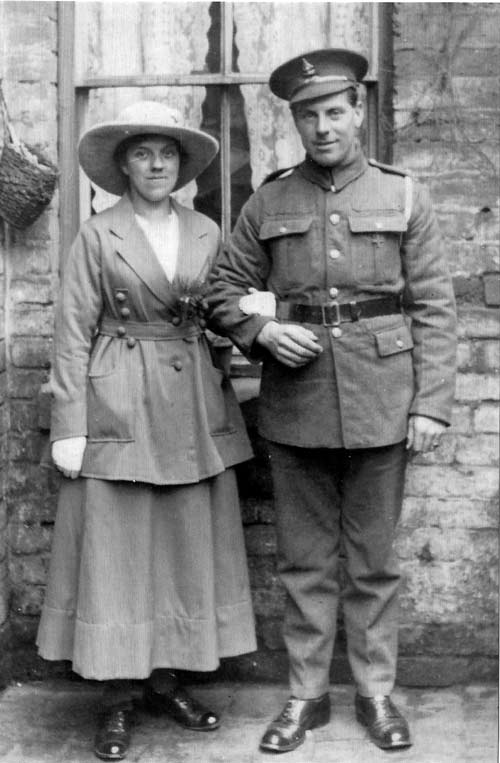 MARK FEENEY
(1889-1958) MARK FEENEY
(1889-1958)
Mark Feeney
was born at 274 Lawley Street, Small Heath
on
4th August 1889 to William and Elizabeth.
(William was Elizabeth's second husband, her
first, John Carter having died in 1893.
See the Frank Carter section above).
As an adult he was 5' 8½",
with fair hair and blue eyes. Like other
members of his family he worked on the
railways before the Great War (being described
as a Railway Carman). He married
Edith Rose
Doyle
(sister of Eva Elizabeth
Doyle, Arthur Taylor's wife, both girls being
the daughters of a Railway Guard, Walter
Doyle,
1860-1901) in October 1917, not long after having
joined up, and they had a son,
Dennis Mark Feeney, (1920-1980
- see below). Dennis served
in the RAF between July 1940 and
April 1944 (see below).
Mark served
as an Able Seaman in the
Anson Battalion,
Royal Naval Division from July 1917 to
16th April 1919. He landed in France on 8th
November 1917 as a member of
7th
Entrenching Battalion RND, being detached to 1st Royal Marine Light Infantry on 14th March
1918. The following month he was admitted to
hospital with boils and then again, on
9th November, with a chest injury, finally
being released from the last of a succession
of hospitals on 10th February 1919. After
demobilisation he returned to work on the
railways, almost certainly with the L.M.S.
On 11th July
1941 he volunteered for the Home Guard. At
that time he was living at
84 Treaford Lane,
Alum Rock, just two doors away from his
brother-in-law, Arthur Taylor. He became
a member of the 33rd Warwickshire (Birmingham)
Battalion and the records suggest that he
served at the
Saltley Depot. The 33rd
Warwickshire was one of those battalions which
did not have a specific geographical area to
defend, like most of the others, but was made
up entirely of L.M.S. employees and was
charged with responsibility for all that
Company's facilities throughout the city -
track, bridges, workshops, engine sheds,
sidings etc., etc. Its HQ was in
Edgbaston but
individual units would of course have had
their base wherever their main focus of
activity was – usually adjacent to the
members' place of work.
Mark was promoted
Corporal on 6th October 1943 and Sergeant on
11th April 1944. He was obviously well
regarded, as confirmed by this Certificate of
Commendation (which shows his previous rank)
issued on 15th
June 1944.
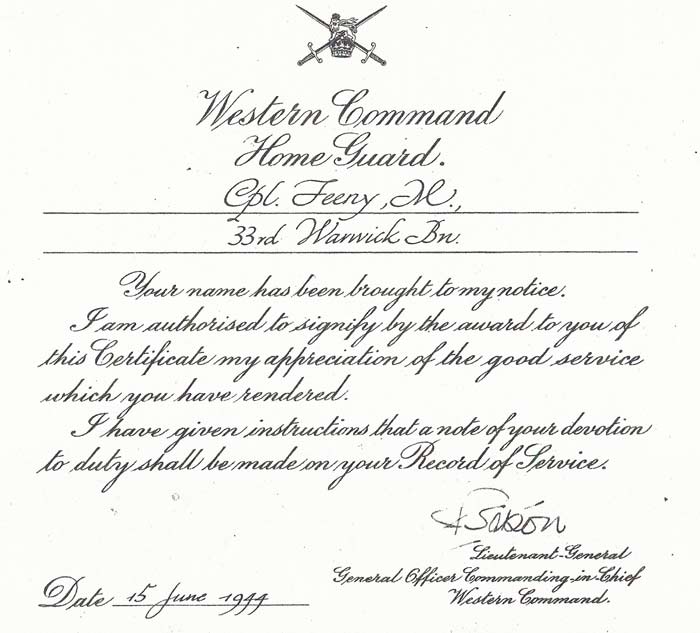
Two group images
of Mark and his 33rd Warwickshire Battalion
comrades survive:
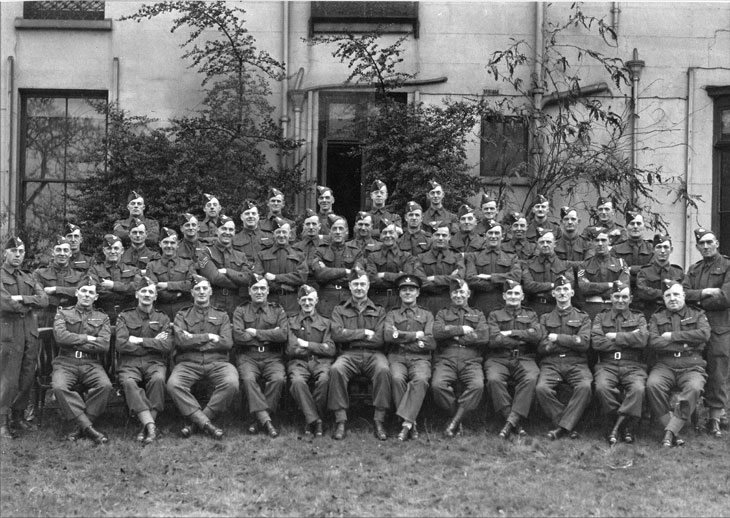
Mark
Feeney is third from the left in the (nearly)
back row, standing slightly in front of his
comrades.
Click
on image for higher definition version
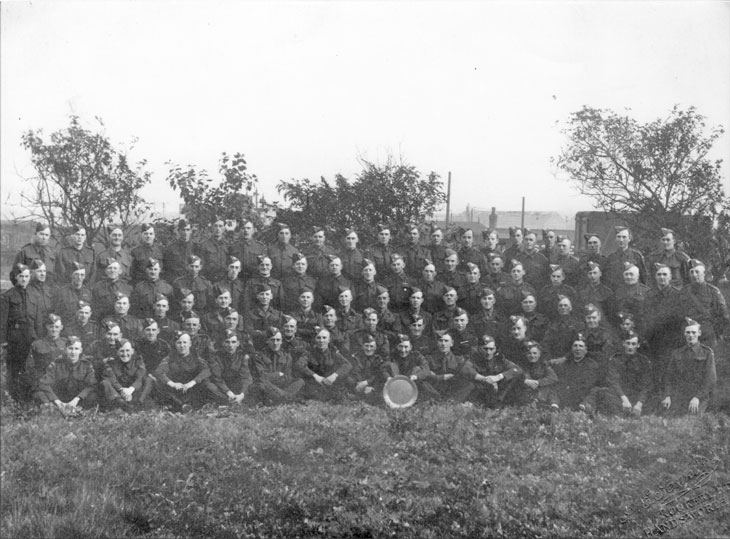
Mark
is fourth from the left, back row.
Click
on image for higher definition version
There were clearly light-hearted
moments during this long period of service.
Here he is with his comrades
(from left to right at the rear: Mark, Arthur, Frank),
his son, Dennis and Dennis's then fiancée,
Kathleen Devlin, a WAAF from Ballymena.
(Kathleen was not to become one of the
three wives whom Dennis acquired during his
lifetime).

And on the
same occasion, another jolly moment
(below)
....
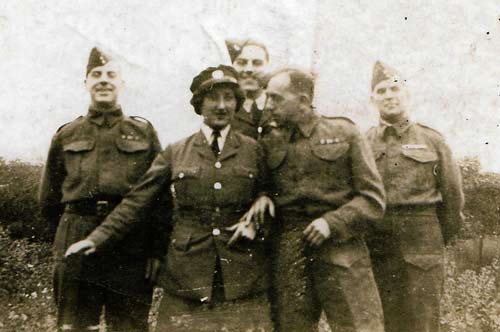 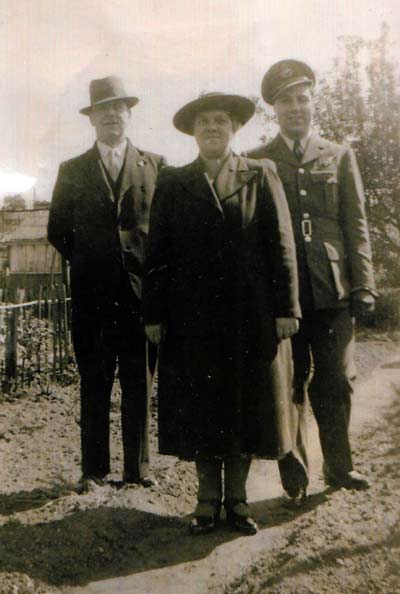
A further,
perhaps later wartime image
(right) shows
Mark in civilian clothes
with his wife and son, Dennis, who is in RAF
officer’s uniform and by that stage sporting aircrew
insignia, that of an Observer.
Just as Mark was photographed in
uniform by the side of his wife in
October 1917, here he
is again
(below),
perhaps in 1943 or 1944, back in
uniform, but now that of the Home
Guard - Edith still his constant
support. |
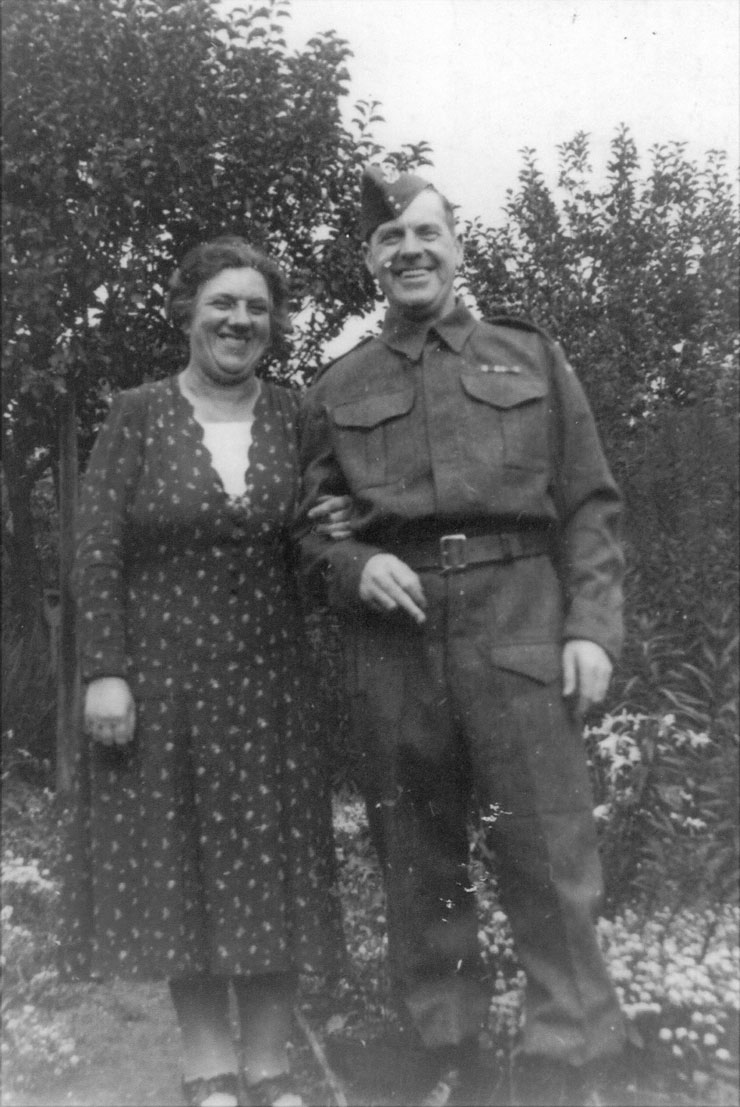
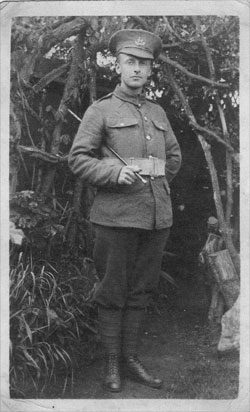
Mark served right through to
stand-down in December 1944 before being
formally discharged, like all Home Guards, on
31st
December 1945. He
continued to live in Treaford Lane and in
1955 the crowded household comprised Mark,
Edith, Dennis,
Mollie Feeney (Dennis's second
wife whom he married in 1950),
Elsie Doyle
(1893-1965
- Edith's sister who had lost a
sweetheart: Sydney Walter Dawes
(right) of
154 Adderly
Road, Saltley, born in 1896, and as a
member of the 1st/8th Warwickshire
Regiment killed on the Somme on 27th
August 1916 and later commemorated on the
Thiepval Memorial; like so many of her
generation she never married),
and
Frank Carter
(Mark's half-brother who may well have
sought refuge with the family fifteen
years earlier after his flight from
France).
Mark Feeney continued to work on the
railways for the rest of his life,
latterly as a porter. He died in Birmingham on 5th December 1958 of Coronary Heart Failure at the age of 69.
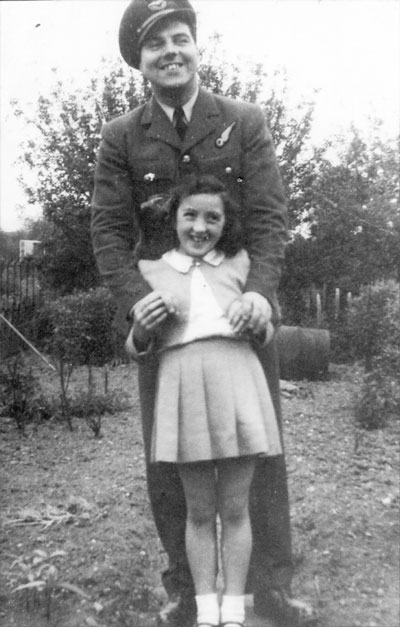
He is seen during the
war years (above) with
his niece, Sheila Mary Taylor, Arthur
Taylor's daughter....and
(right) in
later life.
In civilian life Dennis was in his
earlier days a professional singer.
He eventually became an engineering manager at
the Cincinnati
machine tool factory in
Kingsbury Road, Erdington
and in his spare time was active in amateur
dramatics and choral societies.
He died in 1980. |
DENNIS FEENEY
(1920-1980)
Mark Feeney's
son, Dennis, served in the RAF from 18th July 1940
for almost four years. After induction at Padgate
he served in 919 Squadron and was then recommended for
aircrew training on 2nd January 1942. He subsequently
trained as an Observer in Canada at RCAF Mountain View
in mid-1943 (and it was during this time in Canada
that he acquired one of his fiancées). During the
latter period he had some sort of accident which led
to a long-lasting knee injury (described as a 30%
disability) and his being deemed unfit for aircrew
service. This prevented him from undertaking operational
duties. He was formally discharged on 20th April 1944.
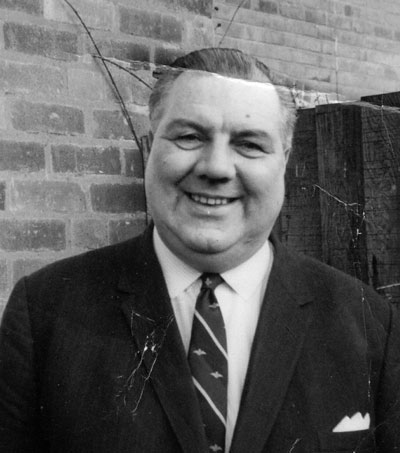 |
|
|
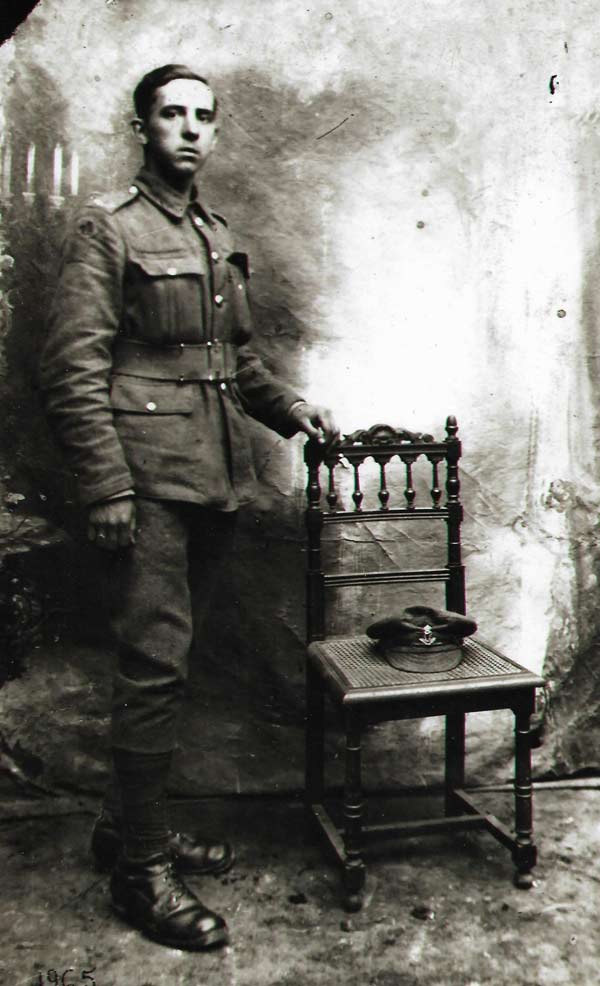 ARTHUR JAMES TAYLOR
(1898-1955) ARTHUR JAMES TAYLOR
(1898-1955)
Arthur Taylor was
born on 26th April 1898 in
Birmingham.
Like his two
relatives, Frank Carter and Mark Feeney, he
worked on the railways before enlisting in the
Army in 1916.
Arthur served in the
Great War as a Private, first in the
8th
Battalion Royal Inniskilling Fusiliers and
later in the 2nd Battalion Royal
Irish Regiment. He was in France in 1918 where
he took part in the third
Battle of Ypres and
then Loos, Peronne and
Cambrai where he was
wounded in October.
After being
invalided home he spent further time in
hospital in Scotland. His service was almost
three years, from May 1916 to February 1919.
He was wounded in his elbow which left him
with a permanent disability. This injury
(officially designated “GSW right elbow with
ankylosis” - although elsewhere as left)
entitled him to an allowance, from 12th March 1919
and calculated at a disability level of 40%,
of 16/- (£0.80) per week for life. No
mention is made of his exposure to gas and the
lasting effects of that experience which would
shorten his life. At that time he was living
at 47 Barwell Road, Small Heath.
Later the family home became
78 Treaford Lane,
Alum Rock which would remain so into the second decade
of the 21st century.
Here he is at some time during
his Army service, photographed, possibly at
around the end of the War or later, in a
Taylor family group with his parents and
siblings. His younger brother, Albert, is
wearing some type of cadet uniform.
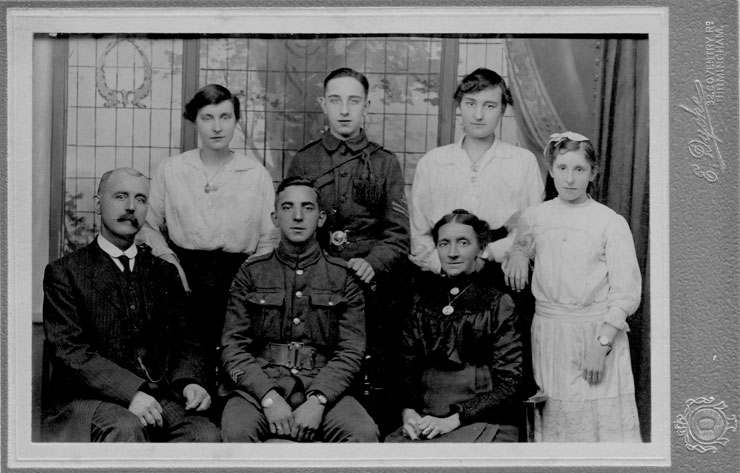
Back row (l/r): Florence Lucy
(1893-1982) - Albert John (1904-1969) - Ellen
Jane (1896-1985)
Front row (l/r): Arthur Taylor (sen.,
1866-1940) - Arthur James Taylor (1898-1955) -
Florence Annie Taylor (1864-1922) - Ethel May
(1905-1990)
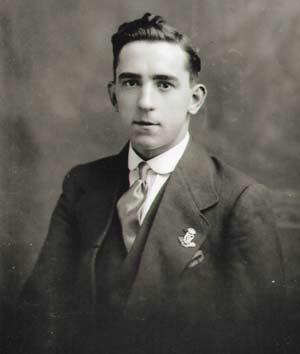 |
In 1926 Arthur married
Eva Elizabeth
Doyle (1898-1985
and sister of Edith Rose
Doyle, Mark Feeney's wife) and they had two
children: Betty Eileen
(1930-1934) and Sheila
Mary (b. 1935). His war service injury had
prevented him from returning to his old job on
the railways and he worked at that time as a
Flour Storeman at the
Birmingham
Cooperative Society Bakeries in
Manor Road,
Stechford.
Arthur
enlisted in the Home Guard at an early
date, 26th July 1940 and joined the 20th
Birmingham (Factory) Battalion. That period of
service did not last long, however: he
resigned on 10th September 1940,
regarding himself as medically unfit
to discharge his duties due to
previous war service injury. Whether
the main factor was his injured elbow
or his respiratory problems, is
unclear. This is his enrolment form.
|
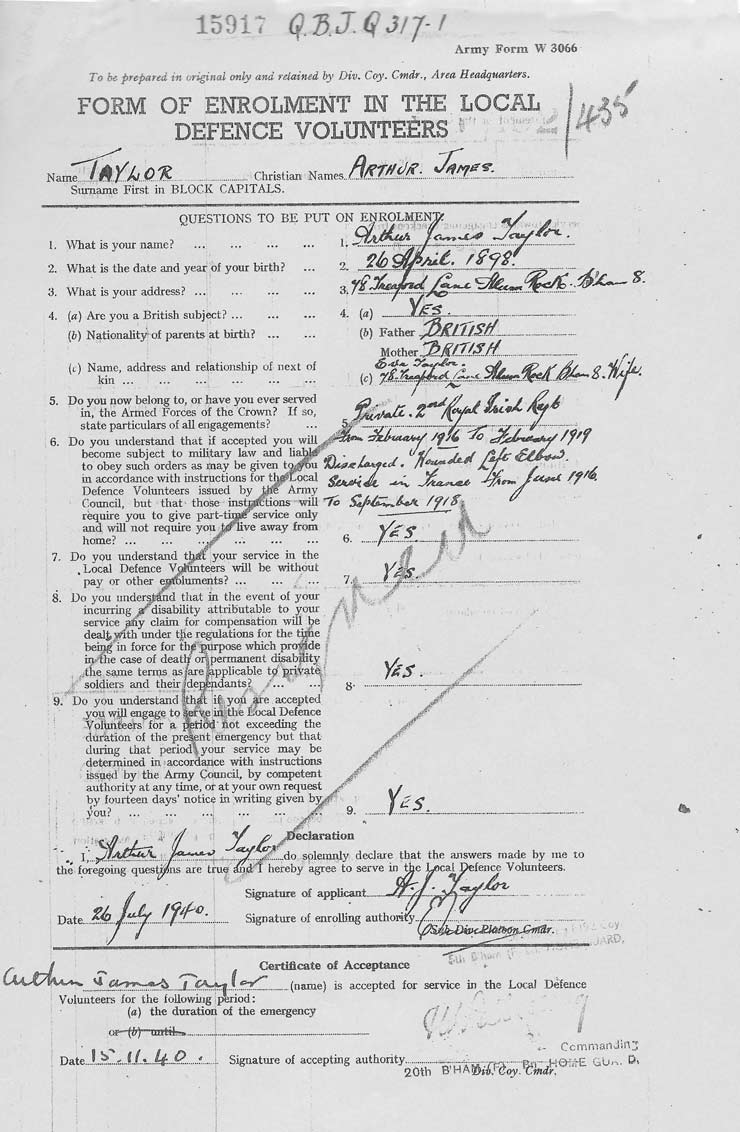
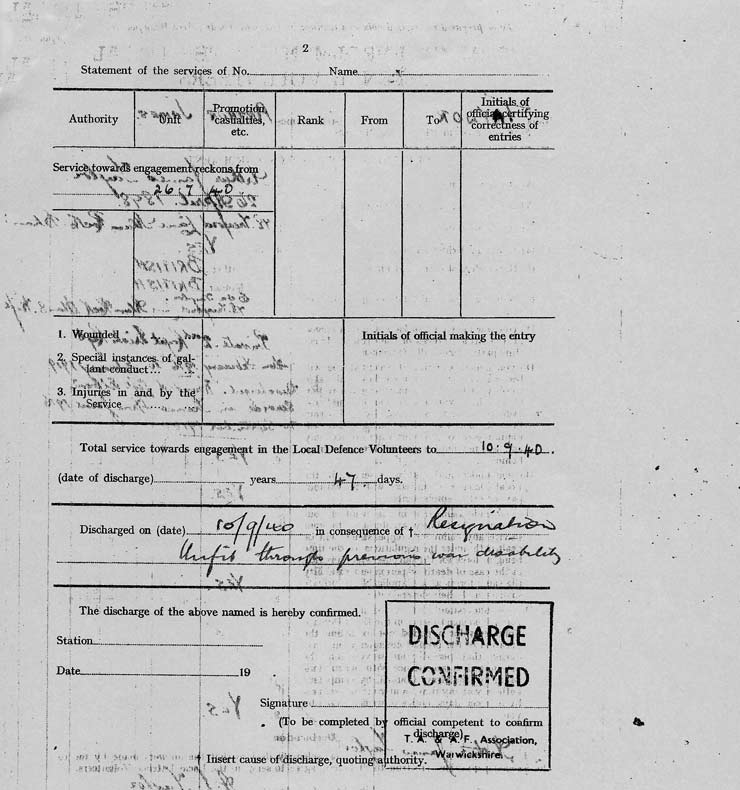 Something changed
later, however. Almost one year after his
resignation he
volunteered again, into the
40th
Warwickshire (Birmingham) Battalion. He was
given a Lance Corporal’s
stripe on 16th
August 1943 and then served right through to
December 1944. (The 40th
Warwickshire was based at
Perry Barr. Again,
there is information about this Battalion in
this website, summarised under
Birmingham,
Perry Barr). Something changed
later, however. Almost one year after his
resignation he
volunteered again, into the
40th
Warwickshire (Birmingham) Battalion. He was
given a Lance Corporal’s
stripe on 16th
August 1943 and then served right through to
December 1944. (The 40th
Warwickshire was based at
Perry Barr. Again,
there is information about this Battalion in
this website, summarised under
Birmingham,
Perry Barr).
A superb image survives of
Arthur Taylor's Platoon, on some exercise in a
bombed area of the city - perhaps in the area
of Ashley Street, adjacent to
Bristol Street. Arthur is
kneeling, second from the right in the front
row, clutching his Sten.

Click on image
for higher definition version
And Arthur is to be seen in this
further photograph, now located in the
middle row, 6th from the left. Whilst this
group is of platoon size and includes
faces from the previous photograph, it
contains an abnormal number of sergeants -
eleven in all - which might suggest some
specialised function within the Battalion
rather than that of a normal infantry
unit.
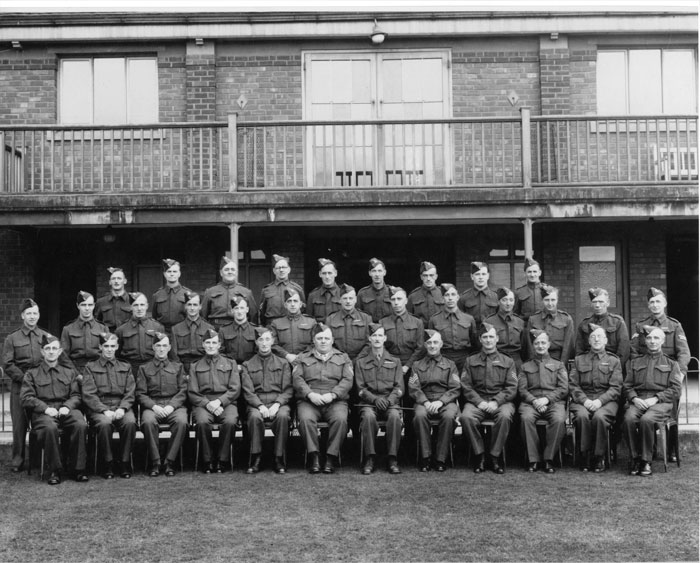
Click on image
for higher definition version
Like that of all Home Guards, Arthur
Taylor's Home Guard service came to an
effective end on Sunday, 3rd December
1944, almost certainly with a ceremonial,
farewell parade through the streets of
Birmingham.
A happy holiday scene in the post-war
years, long after Arthur and Frank's Home
Guard service.
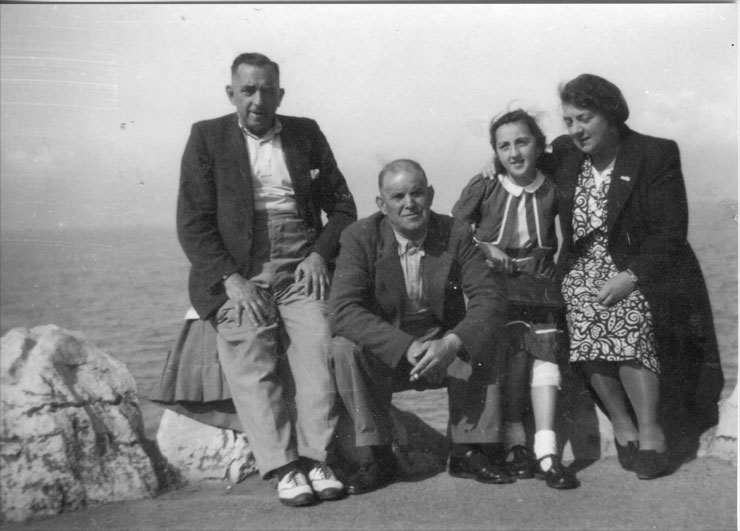
l/r: Arthur, Frank Carter, Sheila
(Arthur's daughter) and Eva, (his wife).
The Great War injury to Arthur's left arm
is evident in this image and also in the one
below, again of Frank and Arthur
(right)
in later life.
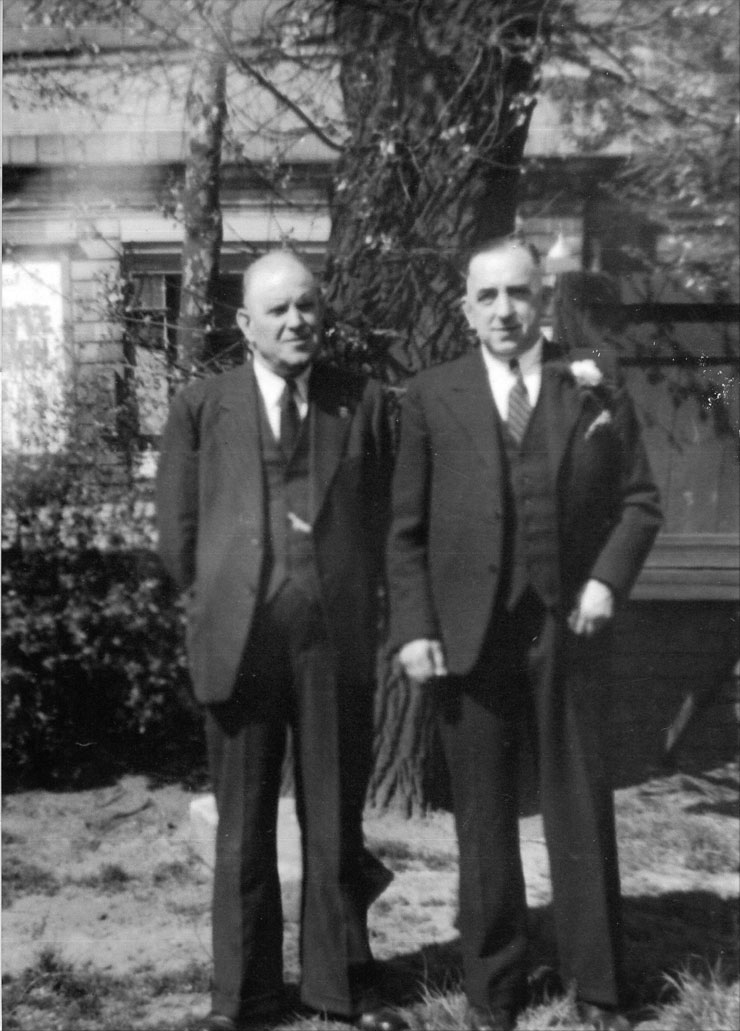
Arthur
Taylor
continued to work for the Co-op until his premature death on 10th April 1955, just
before his 58th birthday. His cause
of death was Congestive Heart Failure and
Chronic Bronchitis – the result of being
gassed in the Great War.
|
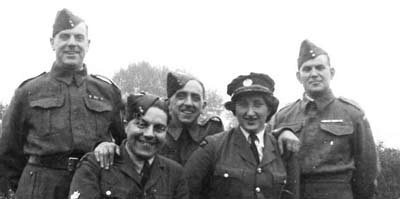
IN
MEMORY OF
The Life and Service
of
Mark
Feeney, Arthur
Taylor and
Frank Carter
(The Mini-Band of
Brothers)
Their family and friends who also
served
and of
All their
Birmingham Home Guard comrades
|
x167 - May 2019,
updated July, August 2019
|
|